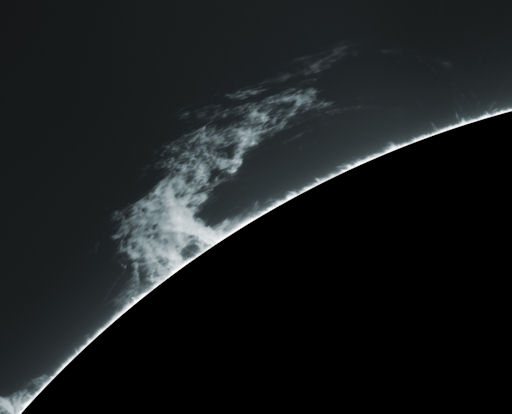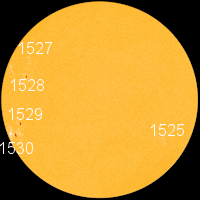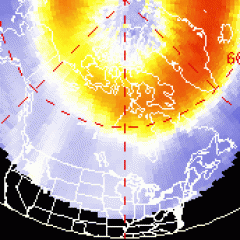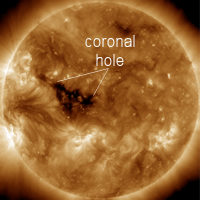LONG RANGE OUTLOOK: A stream of solar wind is heading for Earth, due to arrive on July 28-30. High-latitude sky watchers should be alert for auroras on those dates in case the impact sparks geomagnetic storms. Aurora alerts: text, voice.
PACHYDERMOSPHERE: Amateur astronomers around the world are monitoring a magnificent prominence arcing over the sun's western limb. Alan Friedman of Buffalo, New York, sees it as evidence of a "pachydermosphere--a little known region above the atmosphere of the sun where elephants roam." He drew his conclusion from this picture, which he took from his backyard observatory on July 25th:
Can't see the elephant? All it takes is a little helio-nephelococcygia.
This prominence--a magnetic filament filled with hot plasma--has been suspended above the stellar surface for days. A collapse might be overdue. Astronomers with solar telescopes are encouraged to monitor developments.

![]()
Solar wind
speed: 356.7 km/sec
density: 0.1 protons/cm3
explanation | more data
Updated: Today at 1506 UT
![]()
X-ray Solar Flares
6-hr max: B6 1002 UT Jul26
24-hr: B6 1002 UT Jul26
explanation | more data
Updated: Today at: 1500 UT
![]()
![]()
![]()
Daily Sun: 26 Jul 12
![]()
![]()
None of these sunspots poses a threat for strong flares. Credit: SDO/HMI
![]()
![]()
![]()
Sunspot number: 66
What is the sunspot number?
Updated 25 Jul 2012
Spotless Days
Current Stretch: 0 days
2012 total: 0 days (0%)
2011 total: 2 days (<1%)
2010 total: 51 days (14%)
2009 total: 260 days (71%)
Since 2004: 821 days
Typical Solar Min: 486 days
Updated 25 Jul 2012
The Radio Sun
10.7 cm flux: 102 sfu
explanation | more data
Updated 25 Jul 2012
![]()
![]()
![]()
Current Auroral Oval:
![]()
Switch to: Europe, USA, New Zealand, Antarctica
Credit: NOAA/POES
![]()
![]()
![]()
Planetary K-index
Now: Kp= 2 quiet
24-hr max: Kp= 2 quiet
explanation | more data
![]()
Interplanetary Mag. Field
Btotal: 3.2 nT
Bz: 3.0 nT north
explanation | more data
Updated: Today at 1506 UT
![]()
![]()
![]()
Coronal Holes: 25 Jul 12
![]()
![]()
A solar wind stream flowing from this coronal hole should reach Earth on July 28-30. Credit: SDO/AIA.





